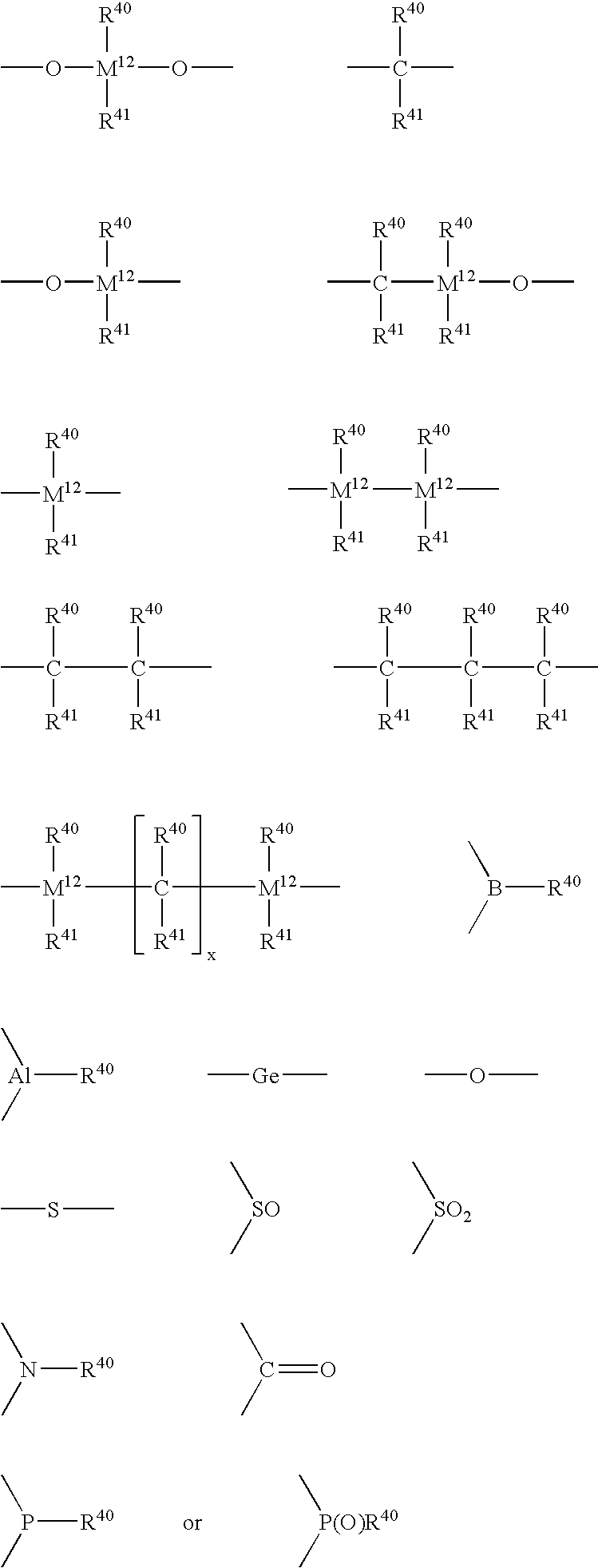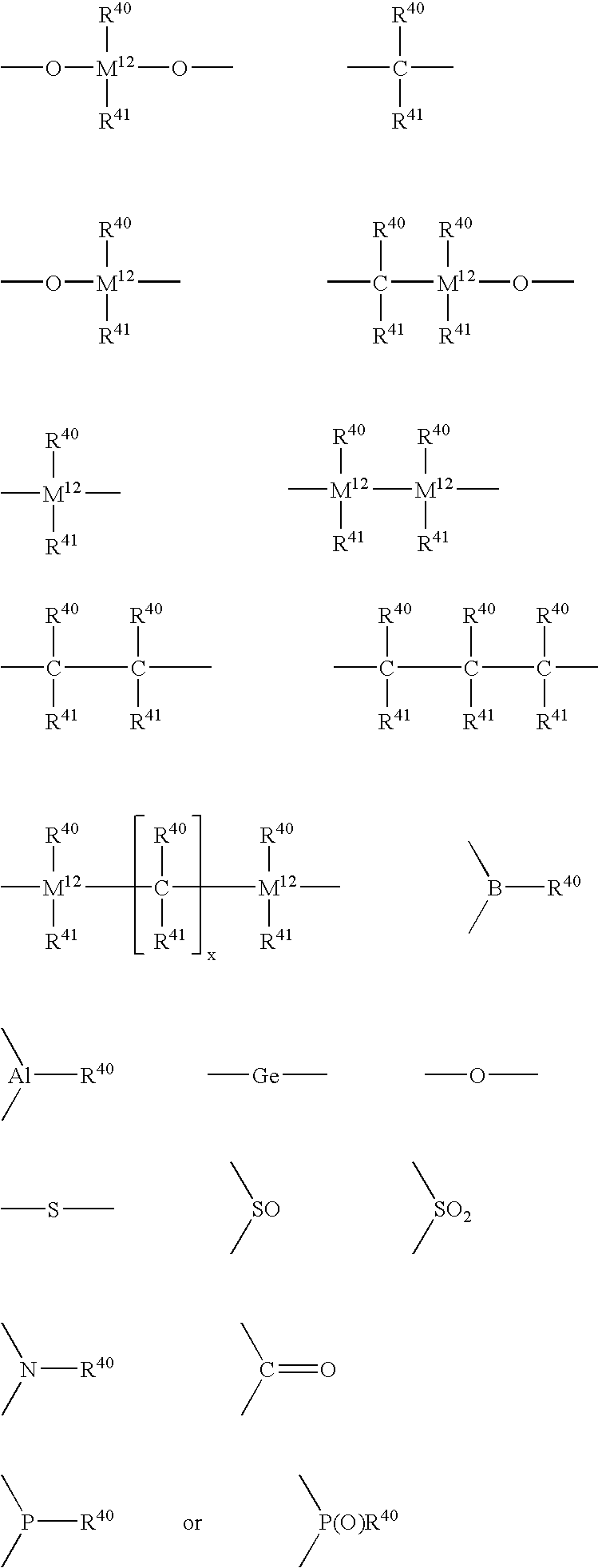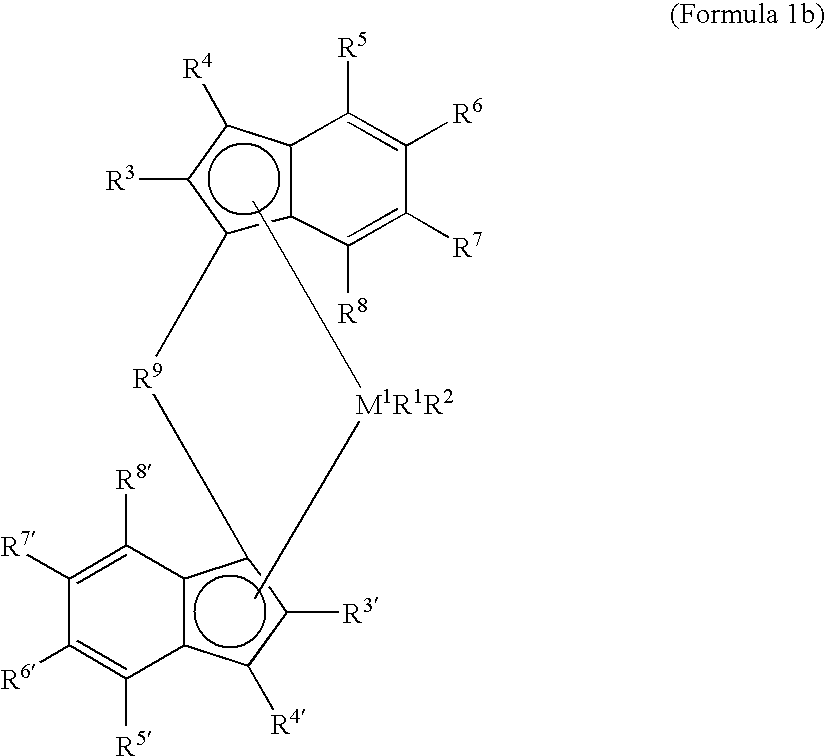Metallocene catalysts, their synthesis and their use for the polymerization of olefins
a technology of olefin polymerization and metallocene catalyst, which is applied in the field of high-active supported catalyst systems, can solve the problems of low productivity, questionable industrial usefulness of homogeneous catalyst systems, and inability to use homogeneous catalyst systems in liquid monomer or gas phase, etc., and achieve good morphologies of polymer particles and improved catalyst productivities
- Summary
- Abstract
- Description
- Claims
- Application Information
AI Technical Summary
Benefits of technology
Problems solved by technology
Method used
Image
Examples
example 1
Preparation of Di-n-hexylsilanediylbis(2-methyl-4-(4′-tert-butylphenyl)indene)
[0508]10.9 g (41.5 mmoles) of 2-methyl-4-(4′-tert-butylphenyl)-1-indene are introduced into 190 mL of toluene and 11 mL of THF, and 17.4 mL of n-butyllithium (2.5 M in toluene) are added without interruption at room temperature. After this addition is complete, the mixture is heated to 80° C. and stirred at this temperature for one hour. It is allowed to cool to 40° C., and then 5.8 mL (20.7 mmoles) of di-n-hexyldichlorosilane are slowly added dropwise. After this addition, the reaction solution is stirred for three hours at 60° C. and then overnight at room temperature. 60 mL of water are added, and the phases that form are separated. The organic phase is washed with 100 mL of water, and the aqueous phase is extracted three times with a total of 100 mL of toluene. The combined organic phases are dried over magnesium sulfate. After separation of the magnesium sulfate, the solvent is removed and the residue...
example 2
Preparation of Di-n-hexylsilanediylbis(2-methyl-4-(4′-tert-butylphenyl)-indenyl)zirconium dichloride
[0510]7.3 g (10.1 mmoles) of di-n-hexylsilanediylbis(2-methy-4-(4′-tert-butylphenyl)indene are introduced into 80 mL of diethyl ether, and 8.1 mL of n-butyllithium solution (2.5 M in toluene) are added at room temperature. After this addition is complete, the mixture is stirred overnight at this temperature. It is cooled to 0° C., and then 2.36 g (10.1 mmoles) of zirconium tetrachloride are added in portions. After the addition of 20 mL of diethyl ether, the mixture is allowed to warm to room temperature and is then stirred for two hours at this temperature. The precipitate that forms is separated through a G3 fritted glass filter and washed once with 20 mL of diethyl ether. The residue is then dried in an oil-pump vacuum. The desired product is obtained in a yield of 4.9 g (55%) and a rac:meso ratio>20:1.
[0511]1H-NMR (400 MHz, CDCl3): 7.60–6.96 (m, 16H, arom-H), 2.22 (s, 6H, CH3), 1....
example 3
Preparation of Dimethylsilanediylbis(2-methyl-4-(4′-tert-butyl-phenyl)indenyl)zirconium dichloride
[0512]143 g (0.54 moles) of 2-methyl-4-(4′-tert-butylphenyl)-1-indene are introduced into 2.4 L of toluene and 143 mL of tetrahydrofuran, and 234 mL of an n-butyllithium solution (2.5 M in toluene) are added without interruption at room temperature. After this addition is complete, the mixture is heated to 80° C. and stirred for one hour at this temperature. It is allowed to cool to 40° C., then 33.6 g (0.26 moles) of dimethyldichlorosilane are added dropwise to this reaction solution. The reaction solution is stirred for three hours at 60° C. It is cooled to room temperature, and then 218 mL of an n-butyllithium solution (2.5 M in toluene) are added dropwise. After this addition is complete, the solution is heated to 80° C. and stirred for one hour at this temperature. It is allowed to cool to room temperature, then 71.1 g (0.305 moles) of zirconium tetrachloride are added in portions...
PUM
| Property | Measurement | Unit |
|---|---|---|
| temperature | aaaaa | aaaaa |
| temperature | aaaaa | aaaaa |
| temperature | aaaaa | aaaaa |
Abstract
Description
Claims
Application Information
 Login to View More
Login to View More - R&D
- Intellectual Property
- Life Sciences
- Materials
- Tech Scout
- Unparalleled Data Quality
- Higher Quality Content
- 60% Fewer Hallucinations
Browse by: Latest US Patents, China's latest patents, Technical Efficacy Thesaurus, Application Domain, Technology Topic, Popular Technical Reports.
© 2025 PatSnap. All rights reserved.Legal|Privacy policy|Modern Slavery Act Transparency Statement|Sitemap|About US| Contact US: help@patsnap.com



